Original text by Marina Belova
Several days ago I was thinking if there was a difference between machine embroidery on a net and on a loosely-woven fabric. Technically, both of these materials have enough of empty space for the design to have rather an unappealing look, because the stitches don't have much to hold on to. And the most important task is to achieve even borders instead of jagged ones.
When you come to think of it, you can embroider on anything at all and still get good results. You just need some effort. That is, choose the right stitch parameters and meet all technical requirements.
The technical requirements in our case are simple and widely covered in the variety of sources:
- Stabilizer under + stabilizer on top. Obviously, these fabrics being semitransparent, an ordinary tear-away or cut-away stabilizer isn't suitable for them. That being so, there are not many options left – either semitransparent spunbond (no-show mesh) or water-soluble stabilizers (among them even the adhesive ones with a protective layer, such as Filmoplast) or, as I have already mentioned in my article about embroidery on knitwear, a piece of organza of a matching color. You need to additionally secure this "sandwich" with a thin water soluble film on top and hoop it to prevent wrinkles.
- You can use the threads of any thickness and structure.
- Loosen the upper thread tension.
- Use the most ordinary needles matching the threads and the fabric in thickness. Needlepoint – sharp.
- Lower the speed a little so that not to pull the loosely woven yarns.
In my opinion, following these rules allows us to embroider almost any kind of design except the ones with a large number of stitches. The fabric is a very flexible thing, and it is better not to play with it.
There are some special aspects of the machine embroidery on this kind of fabric:
- It goes without saying that you should pay close attention to the basis of the embroidery – the underlay. Debora Jones, for instance, advises applying 2 layers of underlay, consisting of the edge run and zigzags for satins and the lattice at 90° under the finishing fills. But if you want my opinion, I wouldn't be so keen on strengthening the fabric under the thin satin outlines – better to leave just one underlay of the two.
- Use a standard stitch density. Don't increase or reduce it.
- It makes good sense to increase the pull compensation a bit. For example, I set pull compensation at minimum 0.5 mm on each side of this mosquito, plus the artificial shape distortion (the outlines widening) mentioned here.
- No extra-long stitches on these fabrics; the length should be limited to 3-4.5 mm. Anything longer than that should be split.
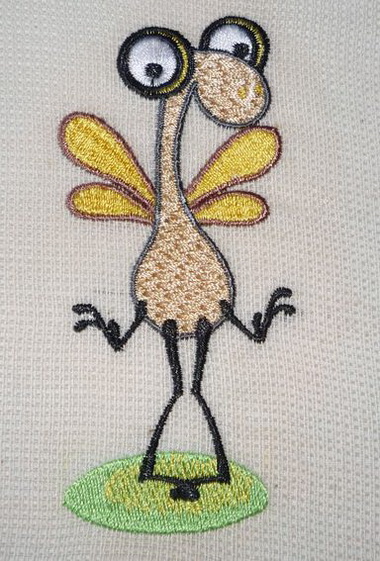
- Nevertheless, the amount of overlapping of the object and its outline (shape distortion + compensation) just barely avoided the appearance of gaps.
- Based on this experience, I would exclude the running stitch outlines from the design and use only simplest fonts like Arial.
- Also, the most important thing is to test everything.
I used organza as a stabilizer for my mosquito because a tear-away one would be visible through my fabric (it is like cross-stitch canvas, but not quite). On the right you can see the fabric with the stabilizer under it and on the left – without it:
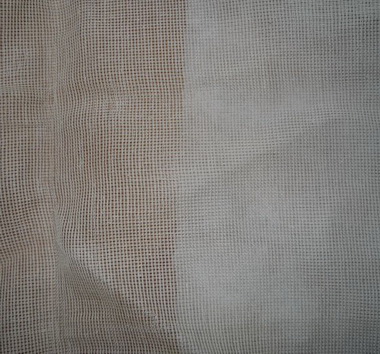
While in this photo there is organza on the right, and you cannot really tell which is which:
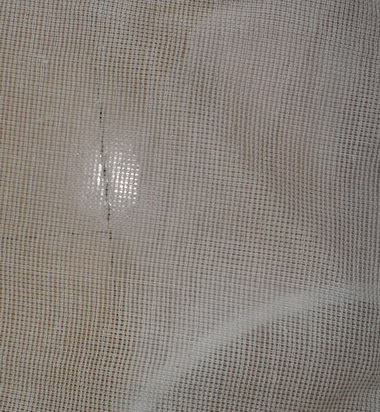
I hooped the fabric together with the organza:
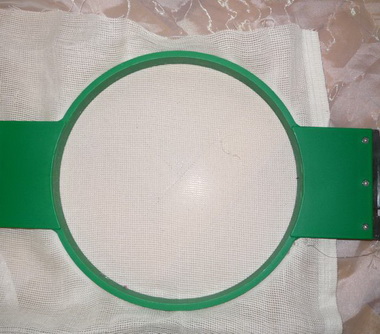
And put a piece of water-soluble film on top:
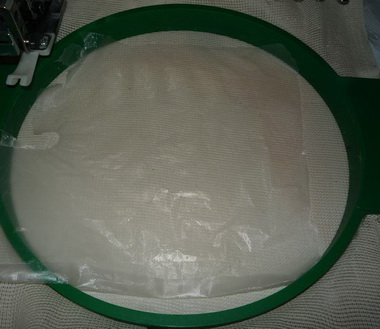
The ready embroidery:
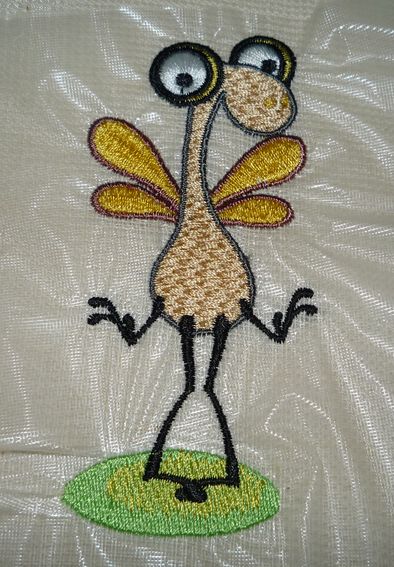
After that, I removed the film from the front and trimmed the organza along the perimeter.
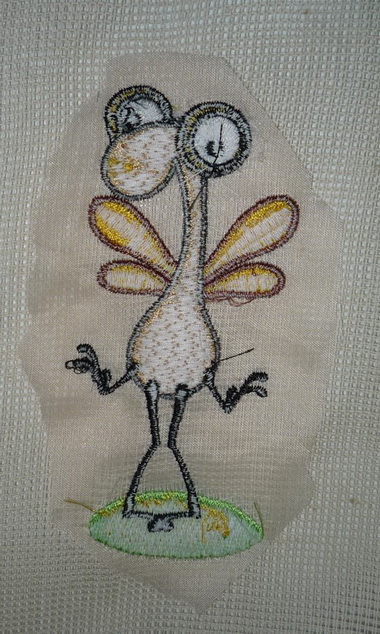
I am quite satisfied with the result, though it has been my first attempt at embroidery on this fabric and that I chose a design with borders and very thin outlines.



There are no reviews to display.